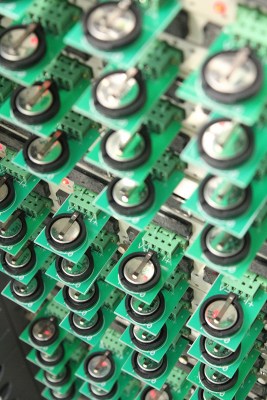Looking to develop a technology that gives batteries more capacity for energy storage and boosts the rate at which they charge, early stage company SiNode has raised new seed financing from the Chicago-based investor, Energy Foundry.
Using a technology developed at Chicago’s Northwestern University, SiNode is trying to update the anode material used inside the lithium ion batteries that power everything from power tools, to laptops, cellphones, and tablets, to electric cars.
For years, massive companies like 3M have been working on new anode technologies that would increase the storage capacity and charging rates of batteries, while also making them lighter. Unlike traditional lithium ion battery anodes, which use graphite, SiNode is using a combination of silicon and graphene in a new layered structure.
As this Chicago Tribune article from earlier in the year reported:
SiNode is commercializing a patented process developed by Northwestern professor Harold H. Kung that increases the absorption of anodes, one of the electrodes that send electrons into an electrical device. The result is a latticework of silicon and graphene produced on the cheap with a porous microscopic surface that holds more charged lithium ions – and thus more electric charge.
Its potential customers are battery companies and consumer electronics makers, lured by the promise of higher energy densities and improved battery performance: The porous anodes suck up more charged particles faster, filling up cell-phone batteries in 15 minutes or so, and hold charges longer.
The deal is the third investment from Energy Foundry, which was formed with a $25 million donation from ComEd and Ameren — the two biggest utilities in Illinois. In 2011 the state of Illinois passed a $3.2 billion bill requiring the two utilities perform a complete overhaul of the state’s grid.
As part of the bill, Energy Foundry was created as a non-profit independent investment vehicle, backed by a commitment from both utilities.
Since its official launch in February 2013, Energy Foundry has made four investments — in Root3 Technologies, a developer of software which manages the use of heating and cooling devices in central utility plants; Intellihot Green Technologies, the developer of a tankless hot water heater technology; an undisclosed renewable energy project developer, and SiNode.
There are two tiers to Energy Foundry’s investment approach. The firm will invest between $100,00 and $250,000 in early stage projects and can invest from $500,000 to $750,000 in more mature companies. Commitments from the Energy Foundry max out at $1.5 million.
“There’s a whole lot of activity around energy technology development that has happened that has been under the radar,” said Sara Hochman, a managing director of the Energy Foundry.
Photo via Flickr user UCL Mathematical and Physical Sciences
